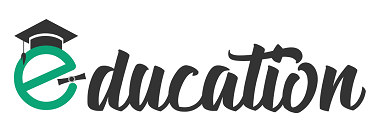In the ever-evolving landscape of recruitment, staying ahead requires a keen understanding of innovative tools and methodologies. One such tool gaining traction in the hiring sphere is the concept of “Job Zones.” But what exactly is a Job Zone, and how can it revolutionize your hiring process? In this comprehensive guide, we’ll delve into the intricacies of Job Zones and explore effective strategies for their implementation in your recruitment endeavors.
Understanding Job Zones
Before we plunge into the practical aspects, let’s demystify the concept of Job Zones. In essence, a Job Zone is a classification system designed to match occupations with similar education and training requirements. Developed by the U.S. Department of Labor, the Job Zone framework categorizes occupations into five distinct zones, each representing a specific level of education, experience, and on-the-job training.
Job Zone 1 (Little to No Preparation): Occupations in this zone typically require little or no prior work experience, and the necessary skills are often acquired through short-term on-the-job training.
Job Zone 2 (Some Preparation): Jobs falling into this zone may require a little vocational education or training. However, they usually don’t mandate prior work experience, and any required training is short-term.
Job Zone 3 (Medium Preparation): Occupations in this zone generally require a moderate amount of preparation. This could include a combination of education, training, and work experience.
Job Zone 4 (Considerable Preparation): Jobs in this zone necessitate a significant amount of preparation, including extensive education, training, and work experience.
Job Zone 5 (Extensive Preparation): Occupations falling into this zone typically demand extensive preparation, often in the form of advanced degrees, long-term training programs, or considerable work experience.
Advantages of Using Job Zones in Hiring
Now that we have a grasp of what Job Zones entail, let’s explore the benefits of incorporating this classification system into your hiring strategy:
Streamlined Candidate Evaluation: By aligning job requirements with specific Job Zones, recruiters can quickly assess a candidate’s suitability based on their education, experience, and training level. This streamlines the initial screening process, saving valuable time.
Enhanced Job Descriptions: Job Zones offer a structured framework for crafting job descriptions. By clearly indicating the required educational background and experience level, you can attract candidates who align with the specific demands of the role.
Targeted Recruitment Strategies: Tailoring your recruitment strategies to specific Job Zones allows for more targeted outreach. Whether you’re focusing on entry-level candidates or seasoned professionals, you can adapt your approach to attract individuals with the appropriate skill set.
Improved Candidate Experience: When job seekers have a clear understanding of the educational and experiential expectations associated with a role, it leads to a more positive candidate experience. This transparency helps candidates self-assess their fit for the position, reducing mismatches and improving overall satisfaction.
How to Effectively Use Job Zones in Hiring
Now that we recognize the advantages, let’s explore actionable steps for integrating Job Zones into your hiring process:
- Conduct a Job Analysis:
Start by conducting a thorough analysis of each position within your organization. Identify the key educational qualifications, experience levels, and on-the-job training requirements. This forms the basis for aligning roles with the appropriate Job Zones.
- Integrate Job Zones into Job Descriptions:
Craft job descriptions with clarity on the associated Job Zone. Clearly communicate the educational background and experience level required, enabling potential candidates to assess their fit for the role.
- Train Recruiters and Hiring Managers:
Ensure your recruitment team and hiring managers are well-versed in the concept of Job Zones. Provide training on how to assess candidates based on the Job Zone framework, fostering a consistent and informed evaluation process.
- Utilize Applicant Tracking Systems (ATS):
Leverage technology, particularly Applicant Tracking Systems, to streamline the application and screening process based on Job Zones. These systems can automatically filter and categorize candidates, making it easier to manage large volumes of applications.
- Tailor Recruitment Strategies:
Customize your recruitment strategies based on the targeted Job Zones. For entry-level positions, consider partnerships with educational institutions. For higher Job Zones, focus on professional networks, industry events, and specialized job boards.
- Implement Continuous Feedback Loops:
Establish a feedback mechanism to continuously evaluate the effectiveness of your Job Zone-based hiring strategy. Solicit input from recruiters, hiring managers, and candidates to identify areas for improvement and refinement.
- Showcase Career Progression Paths:
Highlight career progression paths within your organization based on Job Zones. This not only attracts candidates with growth aspirations but also provides existing employees with a roadmap for advancement.
Case Study: Successful Implementation of Job Zones
To illustrate the real-world impact of incorporating Job Zones into hiring practices, let’s explore a case study. Company X, a tech startup, embraced the Job Zone framework to diversify its talent pool. By clearly defining the Job Zones for each role, they attracted candidates with the right mix of skills and experience. This strategic shift not only expedited the hiring process but also contributed to a more skilled and motivated workforce.
Conclusion:
In a competitive job market, leveraging innovative tools is essential for attracting and retaining top talent. The Job Zone framework offers a structured and effective approach to aligning job requirements with candidate qualifications. By incorporating Job Zones into your hiring strategy, you not only streamline the recruitment process but also enhance transparency, improve candidate experience, and foster a workforce that aligns seamlessly with your organizational goals. Embrace the power of Job Zones and revolutionize your approach to talent acquisition for a more efficient and successful hiring journey.




